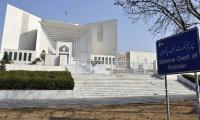ISLAMABAD: Prime Minister Imran Khan and his party leaders were confident that people would pay more taxes during the PTI government but the last 15 years official data shows that the present fiscal year so far remains the worst in term of tax revenue growth in the country.
During the martial law of General Musharraf and the PPP and PML-N governments, which the PTI dub the most corrupt, were in place the tax revenue growth was several times better than what has been recorded during the first ten months of the present fiscal year.
While the revenue growth percentage for the first ten months of the present financial year is below 3 percent, this ratio has been considerably high during the last 15 years when even what the PTI called “corrupt” and “thief” (PPP and PML-N) were ruling the country.
Official data shows that the revenue collected by the FBR in the fiscal year 2003-2004 was Rs510.6 billion. This figure reached Rs3,842 billion in 2017-18.
The target for the present fiscal year is Rs4,398 billion but by end April i.e. in the first ten months of the present fiscal year, the FBR collected Rs2,993 billion. The FBR was to collect Rs3,337.7 billion during July-April period of the current fiscal year.
It means the provisional shortfall so far has ballooned to Rs345 billion. According to the senior economic correspondent of The News Mehtab Haider, without moving ahead with tax amnesty scheme the maximum collection could go up to Rs3,940 billion till June 30, 2019.
It means that the FBR is going to face massive shortfall in the range of Rs460 billion in the outgoing financial year.
In the last fiscal year, 2017-18, the FBR had collected Rs3,842 billion and this year it is expected to be around Rs3,940 billion, showing the revenue growth of around 2.5 percent.
Interestingly, the revenue collected of Rs510.6 billion during 2003-2004, rose to Rs590.4 billion during 2004-2005 with over 15 percent revenue growth.
In year 2005-2006, the revenue collection reached Rs712.5 billion, in 2006-2007 it was Rs847.2 billion.
During the first financial year of the last PPP government- 2008-2009- the revenue collected grew from previous year’s Rs847.2 billion to Rs1,161.2 billion.
It went further up to Rs1,328.6 billion during 2009-10, and touched Rs1,558 billion in 2010-2011. The FBR collected Rs1,883 billion during 2011-12 and Rs1,946 during 2012-13, which was the last fiscal year of the PPP government.
The PML-N government collected Rs2,255 billion in 2013-14; Rs2,590 billion 2014-15; Rs3,112 billion during 2015-16; Rs3,367.9 billion during 2016-2017 and Rs3,842 billion during 2017-18.
According to year book 2018 of the FBR, the overall FBR revenue collection during last five years had increased from Rs2,255 billion in FY 2013-14 to Rs3,842.1 billion in FY 2017-18. Five years’ average growth has been 14.6 percent.
Thus the 14.6 percent growth in revenue collection during the last PML-N government has come down to merely 2.5 percent.
This has happened despite the PTI government’s claim that during their rule there is no corruption and no wastage of public money.
When contacted, a government functionary said that the way last government by the PML-N had devastated the economy the PTI government had to take tough measures, including steps against corruption in the country, and as a result tax collection was low.
He said that the current economic situation will not last long as new team has been placed in to run the economy which is taking their work seriously.
He said that now the tax will be collected in time and tax net will expand as new filers will be identified by the tax machinery.
Prime Minister Imran Khan was of the view when the people will see that their rulers are honest and are not spending taxpayers’ money on their luxuries and protocol, they will trust the government and pay more taxes. Imran Khan had also promised that he would double the tax collection but it is not happening. Instead, the growth in revenue collection witnesses a historic nose-dive.
Khyber Pakhtunkhwa Chief Minister Ali Amin Gandapur. —Radio PakistanISLAMABAD. All the witnesses have been...
Former prime minister, MNA Raja Pervez Ashraf speaking on the occasion of World Press Freedom Day at the National...
Poster of “7th Sky Entertainment” drama serial “Khumar”. — YouTube/Geo News KARACHI: The last episode of...
Mahr Sahibzad Khan. — PMD websiteISLAMABAD: Prime Minister Shehbaz Sharif approved the summary for re-employment of...
Pashtunkhwa Mili Awami Party Chairman Mahmood Khan Achakzai is participating in a protest in Pishin against alleged...
In this screengrab, Agriculture Minister Ashiq Hussain Kirmani chairs a meeting, Punjab Agriculture Secretary Iftikhar...







